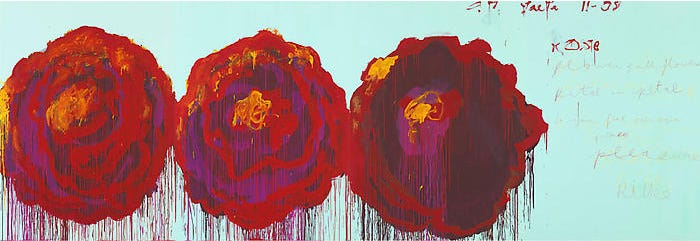openness
receiving love is harder than giving it
When asked what he’s learned from editing the Modern Love column for 20 years, Daniel Jones said, “There’s kind of a dividing line between people who continue to open their hearts and those who shut down. And one is the path to happiness, and one is the path to unhappiness and regret.”
I heard this on The Daily podcast back in December, and I’ve been thinking about it ever since. It’s rather unfortunate that our upbringing has such a profound impact on our relationship patterns often before we even know how to voice our needs. If we were left alone as a kid, we might gravitate toward a partner who’s aloof and distant while privately yearning for greater intimacy. We don’t ask for it because we’ve learned to internalize that desire as something we don’t deserve. On the other hand, if our caregiver was smothering, we might seek partners who demand a lot from us while subconsciously craving space.
Intimate relationships expose us to triggers that activate childhood wounds, forcing us to confront unmet needs and begin the process of healing. In short, a romantic relationship can be a container to work through your trauma, but that can only happen through conflict.
Love is more like a basketball than a crystal vase. This was the insight in a Modern Love essay by Thomas Hooven. A vase looks beautiful and perfect on the outside but breaks when dropped. When you drop a basketball, it bounces back. If you view conflict as a destructive force, you’ll try to avoid it at all costs. But that’s just deferring the problem until it erupts later, with catastrophic consequences, reaffirming your belief that conflict is destructive. When handled well, conflict makes a relationship more resilient.
Unsurprisingly, you can learn a lot about relationship conflict from parenting books. The underlying principle of Good Inside by Dr. Becky Kennedy is that parents and kids are fundamentally good people, even if they act out and say hurtful things. It’s a profound truth that’s easy to forget in the heat of the moment. When we’re upset, we villainize the other person. We stonewall them or lash out because we want them to feel how we feel. It doesn’t mean we’re bad. All we’re doing is seeking connection, even if connection means sharing our pain.
A better way to bridge the gap between our experience and the other person’s is to acknowledge that “two things can be true.” Dr. Kennedy gives an example of a frustrated parent dealing with a kid who wants to play outside but doesn’t want to wear his jacket. The parent can acknowledge that both things are true: “It’s cold outside and you feel warm enough to not need your jacket.” Only when two people can accept a shared foundation of truth can they begin to work toward a solution. Otherwise, they’re stuck at an impossible impasse: I’m right; you’re wrong.
This applies to any relationship. The goal isn’t to convince someone that their perspective is wrong. All you can do is express what’s important to you and hold space for the other person’s truth.
There’s a reason we’re taught to use “I” statements when working through conflict. I think. I feel. I want. “I” statements avoid projection and blame (we can only speak for ourselves). They’re also powerful because you’re letting the other person into your inner world. You’re cracking open your heart. Access to your thoughts, feelings, and desires is the greatest gift you can give someone who loves you.
In Perfect Love, Imperfect Relationships, John Welwood writes, "there is a secret about human love that is commonly overlooked: Receiving it is much more scary and threatening than giving it.” We think we want to receive love, but how often do we push it away or otherwise self-sabotage? Because our earliest experience of love left us wanting and wounded, we developed coping mechanisms to maintain a sense of control and avoid getting hurt. Some people become “pursuers” and others “distancers.” Most of us are a bit of both, depending on the situation. While it might seem like the distancer is the one afraid to receive love, the pursuer is also fearful: they chase and give in order to avoid receiving and responding.
A lot has been written about how to give love, but not as much about how to receive it. Welwood describes this mode as “openness” (this is also the term Daniel Jones used).
Openness is our capacity to let be, to allow, to let in and receive others as they are, in a gentle, spacious way, without having to dominate them or bend them to our will. This kind of letting be is the greatest kindness we can offer those we love.
John Welwood, Perfect Love, Imperfect Relationships
Every relationship that fails is the result of either too much intensity and not enough openness or too much passivity and not enough contact. The work of being in a relationship is to navigate the gulf between what we want and what our partner wants. To mediate degrees of closeness and separation. To reach out and make contact. Equally, to open our hearts and let be. A relationship lives and dies by this tenuous balance.



Beautiful, Elaine.
So so timely ❤️